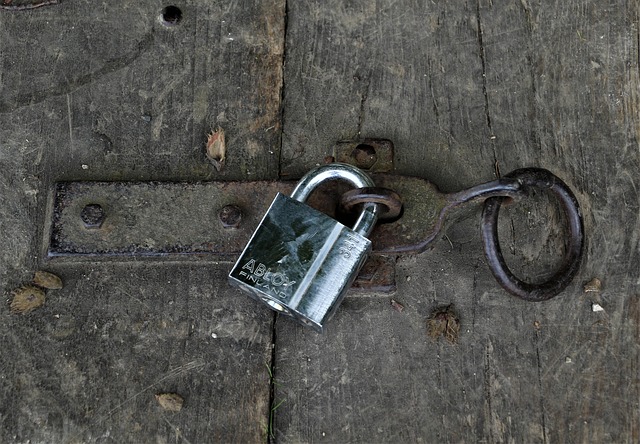Wireless DIY security systems offer apartment dwellers convenient, accessible home protection solutions without complex wiring. These systems consist of wireless sensors, controllers, and alarms that provide reliable security. Before setting up a system, compile essential equipment like sensors, control panels, and tools for installation from reputable suppliers. The setup process involves selecting a suitable system, customizing sensor placement, downloading associated apps, and testing the system. Regular testing and maintenance, including cleaning, battery checks, and firmware updates, ensure optimal performance.
Looking to secure your apartment on a budget? Wireless DIY security systems offer an affordable, flexible solution. This comprehensive guide walks you through setting up your own apartment alarm system step-by-step. From understanding the basics of wireless technology and gathering essential equipment to installing, configuring, testing, and maintaining your system, we’ve got you covered. Boost your home safety without breaking the bank with these easy-to-follow instructions focused on wireless DIY security systems.
- Understanding Wireless DIY Security Systems
- Gathering the Necessary Equipment
- Installing and Configuring Your System
- Testing and Maintaining Your Apartment Alarm
Understanding Wireless DIY Security Systems

Wireless DIY security systems have revolutionized home protection, offering a convenient and accessible solution for apartment dwellers. Unlike traditional wired systems, these innovative setups eliminate the need for complex wiring, making installation a breeze. With just a few simple steps, you can transform your apartment into a secure space. These systems typically consist of sensors, controllers, and alarms that communicate wirelessly, ensuring a reliable and efficient security network.
The benefits are numerous: ease of setup, flexibility in placement, and the freedom to expand the system as needed. Many wireless DIY kits come with everything required to safeguard your home, including motion detectors, door/window sensors, and panic buttons. These sensors detect unusual activity and send alerts directly to your smartphone, allowing you to monitor your apartment remotely. Understanding how these components work together is key to effectively securing your space and gaining peace of mind.
Gathering the Necessary Equipment

Before starting, make a list of the essential equipment needed for your wireless DIY security system. This typically includes sensors, a control panel, keypads, motion detectors, door/window contacts, and alarm devices. Ensure compatibility among the components to create an effective whole-home protection network.
Purchase these items from reputable suppliers, considering brands known for their reliability and user-friendly designs. Additionally, gather necessary tools like screwdrivers, cable ties, and a drill to install your system properly. With the right gear in hand, you’ll be well on your way to setting up a secure and efficient apartment alarm system.
Installing and Configuring Your System

Setting up a wireless DIY security system for your apartment is a straightforward process that involves several key steps. Begin by choosing a reputable system that aligns with your needs and budget. Many modern options offer flexibility, allowing you to customize sensor placement and monitor activities remotely via smartphone apps. Once purchased, carefully unbox the components, including sensors, a central hub, and a power supply. Follow the manufacturer’s instructions for assembling and installing the devices around your apartment—doors, windows, and other strategic areas are ideal locations. Ensure each sensor is securely attached and aligned correctly to detect any potential intrusions.
After installation, download the associated app on your smartphone or tablet. This digital interface serves as your command center, allowing you to configure settings, set alerts, and monitor live feeds from your security cameras (if included). Test each sensor by simulating an event—like opening a door—to ensure they trigger alerts as intended. Customize sensitivity levels and zones within the app for tailored protection. Additionally, consider adding features like motion detection, glass-break sensors, or environmental monitoring to enhance your apartment’s overall security.
Testing and Maintaining Your Apartment Alarm

Regular testing and maintenance are essential for ensuring your wireless DIY security system remains reliable and effective. Start by familiarizing yourself with your alarm’s control panel and user manual, which should outline specific test procedures. Most systems allow you to perform self-diagnostics, simulating various scenarios to check response times and alerts. This is a crucial step in identifying any potential issues before they become serious.
Maintaining your apartment alarm involves keeping the sensors clean and free from debris, ensuring proper battery levels, and regularly updating firmware (if applicable). Regularly testing motion detectors, door/window sensors, and alarms will help you stay on top of any malfunctioning components. Consider setting up a maintenance schedule to include these checks, as well as cleaning and calibrating your system according to the manufacturer’s recommendations.
Setting up your own apartment alarm using a wireless DIY security system is a straightforward process that empowers you to take control of your home’s safety. By following these step-by-step guides, from understanding the technology to testing and maintaining your system, you can create a secure environment tailored to your needs. Armed with the right equipment and knowledge, you’ll be able to monitor and protect your apartment effectively, offering peace of mind in today’s digital era.
